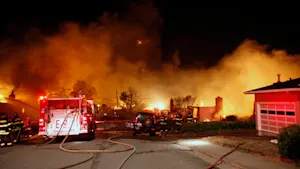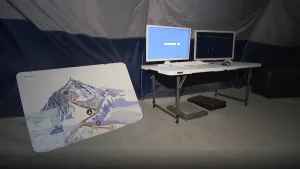More Stories
The Atlantic City International Airport is now using new technology to help travelers feel safer during the pandemic.
As air travel begins to pick up, the airport will now be a testing site for a new COVID-19-fighting program.
“In the United States, this is the first time that these technologies are being showcased and tested,” says Assaf Tamir, with Israel Aerospace Industries.
Tamir’s team debuted two systems on Wednesday. The first is a disinfecting device that uses UVC lights to destroy bacteria on high-touch surfaces. One is set up at baggage claim.
“UVC light has been known for a long time to be very effective and disinfecting and harming viruses and bacteria. And what we’ve done is we make a very useful system that can be easily deployed in any scenarios,” Tamir says.
The company also debuted the “Tamar,” which goes further than an average temperature check.
"On this model, we can see someone's heart rate…We can see someone's respiration rate, the respiration function and how much how they're taking it and pushing out because with COVID that's typically where the problem is,” says Felicity Kay with Eltel & Israel Aerospace Industries.
Kay says that this model works well because travelers can be kept isolated.
“You don't need to touch them, you don't need to put yourself in the line of fire and then if there's a potential problem, you can send them along for further testing,” she says.
Officials say that the technology not only can be used at the airport, but also in places like casinos to help guests feel more comfortable about visiting.
"I go into the casino and they gave me a temperature test. I wonder what it really does. This application here really does a deeper test, respiratory and heart rate, as well as thermal imaging to make sure that people really aren't sick,” says Atlantic County Economic Alliance president Lauren Moore Jr.
Israel Aerospace Industries picked New Jersey as the site to debut the new technology. Locations in Mississippi and Indiana were also considered.
More from News 12
1:31

What's Cooking: Uncle Giuseppe's Marketplace's prime rib roast
1:30

Looking for a road trip? Check out Big Snow at American Dream in East Rutherford
1:27

What's Cooking: Uncle Giuseppe's quiche lorraine
2:34

Guide: Safety tips to help prevent home burglaries
2:19

Guide: Safety measures to help prevent fires and how to escape one
2:36
